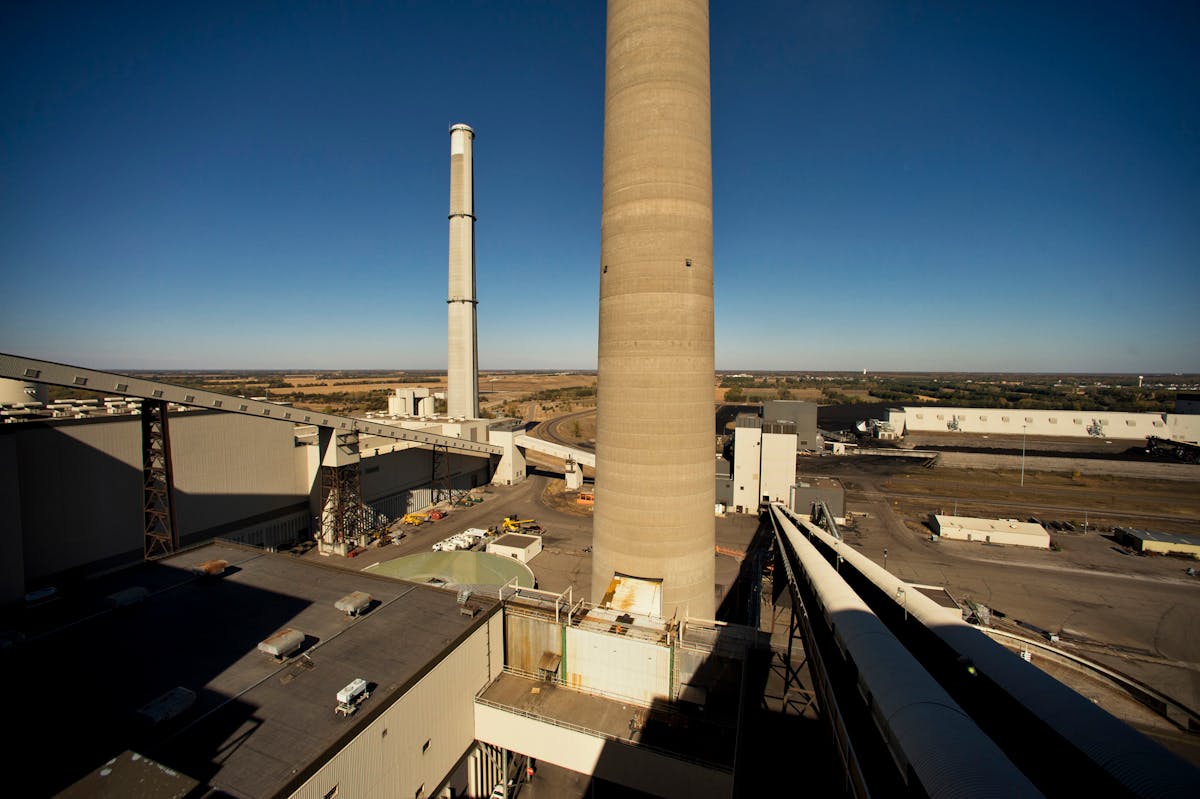A group of power line operators is planning to spend $130 million on several shorter-term fixes to the transmission congestion plaguing southwestern Minnesota wind farms.
The grid can't handle all the wind farms that have sprouted in recent years, leading in 2022 to a large amount of "curtailment" — the temporary shutdown of wind turbines.
The issue has gotten worse this year, a representative from a major wind farm operator told state utility regulators recently.
"2023 has been the worst year we have seen so far for congestion in southwestern Minnesota, and it has spread to other parts of the state," Adam Sokolski, regulatory and legislative affairs director for EDF Renewables, said at a Minnesota Public Utilities Commission (PUC) meeting last week.
The turbine shutdowns have led to "dramatic drops" in wind power, Sokolski said. "We are sprinting towards a brick wall, and we may have already hit it in southwestern Minnesota."
During a windy April, EDF experienced curtailment rates of 65% at three of its four Minnesota wind farms, Sokolski said in an interview. The problem is not limited to EDF, a longstanding participant in the state's wind farm business.
"When the wind blows, there is not enough transmission during many hours of the year," he said.
Several large new transmission lines are in the works for Minnesota, which will together cost over $2 billion. But the regulatory and planning process for new power lines — along with actual construction — can easily take seven years.
With that in mind, Grid North Partners, a group of transmission operators and utilities, is launching an initiative to make shorter-term improvements to alleviate congestion.
"We are focused on incremental upgrades," Matt Ellis, Great River Energy's transmission strategy and development director and Grid North's co-executive director, said at the PUC meeting. "We are trying to eke out just a little more power."
Grid North Partners — which includes Great River, Xcel Energy, Minnesota Power and Otter Tail Power — is planning 19 congestion relief projects, all but one of which is in Minnesota.
The projects should be completed between the end of this year and 2026, Ellis said in an interview.
The largest project — with a roughly $100 million price tag — is Xcel's plan to add a second power line on an existing transmission corridor. Transmission towers on that route have spare capacity. The project, which needs PUC approval, is expected to be completed in 2025.
Many of the projects planned by the Grid North utilities are considerably smaller, and thus don't require PUC approval.
"Generally speaking, they are part of normal day-to-day business," said Michael Lamb, Xcel's senior vice president for transmission.
Some projects involve upgrading grid equipment like switches and transformers, or reconfiguring breakers — all with the goal of increasing power flow and reducing congestion.
"It is not always the [power] line that creates the limiting factor," Lamb said.
Some projects will entail the use of flexible power line capacity "ratings," which allow for more transmission. Traditionally, power lines are rated for a worst-case scenario based on heat. In other words, the capacity rating reflects forecasts for the year's hottest day.
But "ambient adjusted" ratings take into account real-time temperature conditions, allowing for greater power flows. "Dynamic" ratings go a step further, accounting for wind speeds and other factors. Wind cools hot power lines.
Xcel has already used dynamic line ratings on some of its power lines and has seen transmission capacity increases of up to 20% to 30%, Lamb said.
EDF's Sokolski called the Grid North initiative "great news."
"It is good foresight and planning," he said. "It will probably relieve some congestion, but probably not relieve the severe congestion and curtailment we are seeing in southwestern Minnesota."
Addressing congestion issues is critical given a Minnesota law passed earlier this year that mandates 100% carbon-free power by 2040, Sokolski said.
"We will have to do a more planning and implementation for the state to reach its carbon-free goals," he said.
California Disney characters are unionizing decades after Florida peers. Hollywood plays a role

Friends split a mortgage, share a home to beat high housing costs

